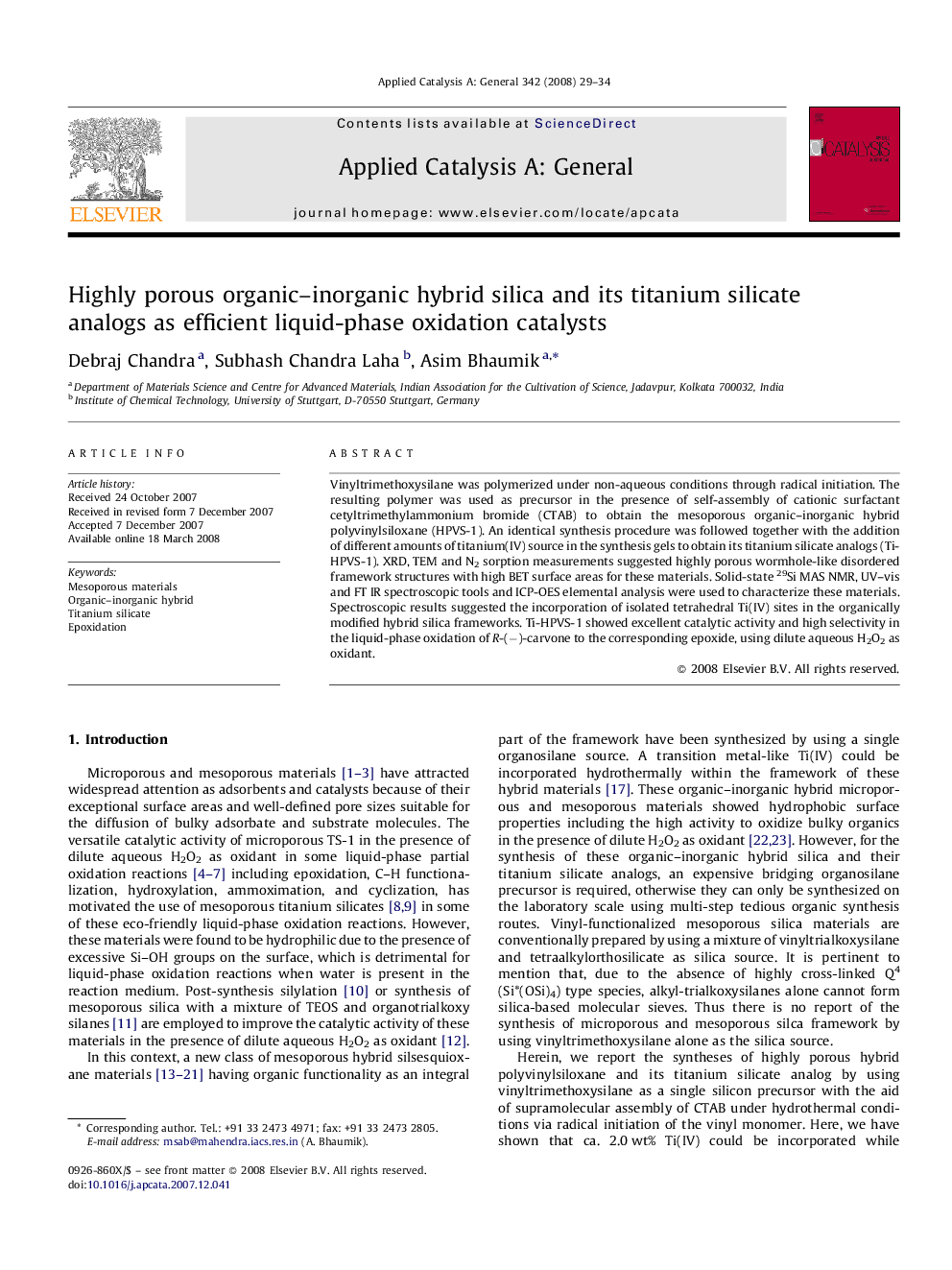| Article ID | Journal | Published Year | Pages | File Type |
|---|---|---|---|---|
| 43009 | Applied Catalysis A: General | 2008 | 6 Pages |
Vinyltrimethoxysilane was polymerized under non-aqueous conditions through radical initiation. The resulting polymer was used as precursor in the presence of self-assembly of cationic surfactant cetyltrimethylammonium bromide (CTAB) to obtain the mesoporous organic–inorganic hybrid polyvinylsiloxane (HPVS-1). An identical synthesis procedure was followed together with the addition of different amounts of titanium(IV) source in the synthesis gels to obtain its titanium silicate analogs (Ti-HPVS-1). XRD, TEM and N2 sorption measurements suggested highly porous wormhole-like disordered framework structures with high BET surface areas for these materials. Solid-state 29Si MAS NMR, UV–vis and FT IR spectroscopic tools and ICP-OES elemental analysis were used to characterize these materials. Spectroscopic results suggested the incorporation of isolated tetrahedral Ti(IV) sites in the organically modified hybrid silica frameworks. Ti-HPVS-1 showed excellent catalytic activity and high selectivity in the liquid-phase oxidation of R-(−)-carvone to the corresponding epoxide, using dilute aqueous H2O2 as oxidant.
Graphical abstractVinyltrialkoxysilane was polymerized under non-aqueous conditions. This polymeric precursor was used for the synthesis of organic–inorganic hybrid mesoporous silica and its titanium silicate analogs. Titanium containing hybrid materials showed good catalytic activity and epoxide selectivity in the liquid-phase oxidation of R-(−)-carvone using dilute aqueous H2O2 as oxidant.Figure optionsDownload full-size imageDownload as PowerPoint slide
